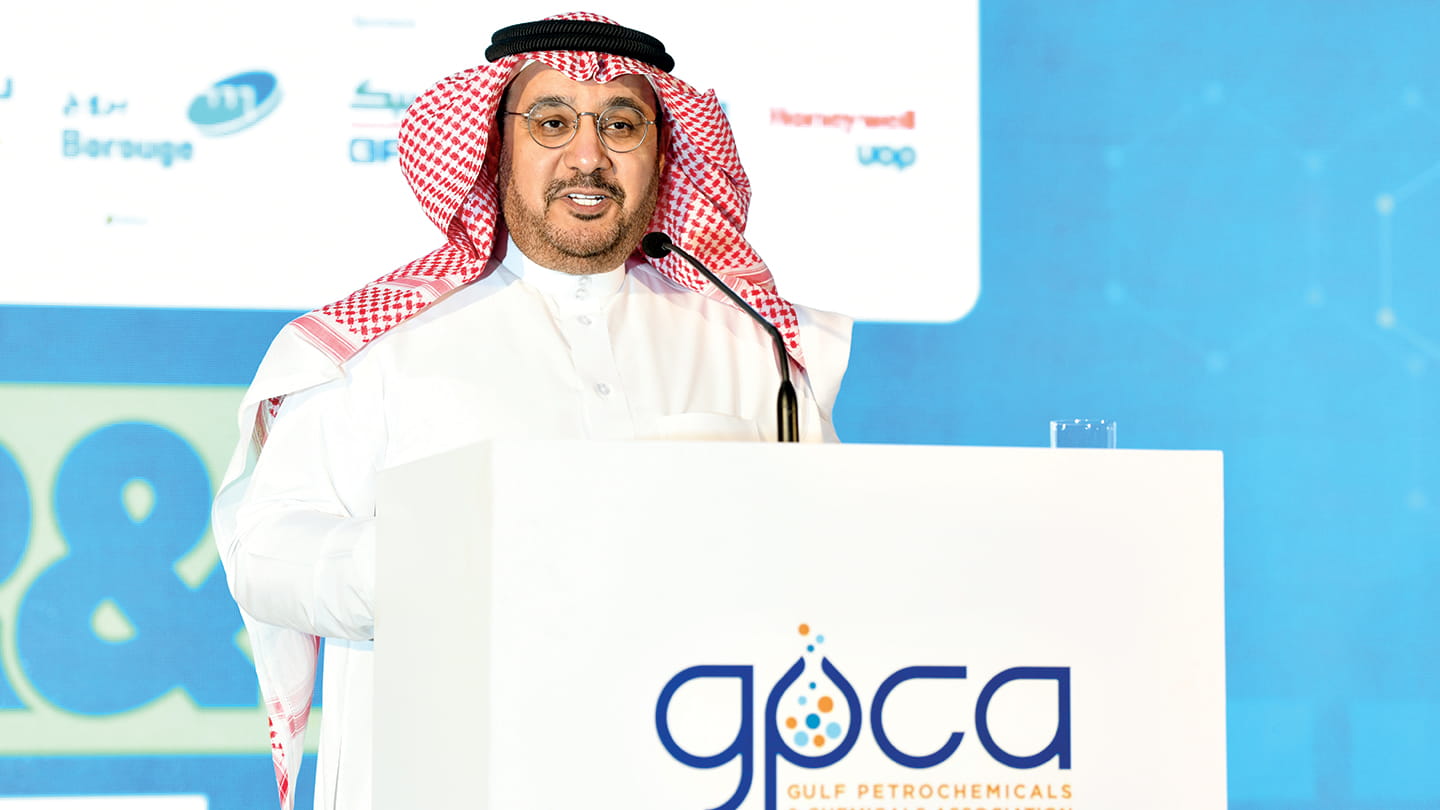GPCA research and innovation summit chemicals progress highlighted

A powerful combination of youth and experience were in evidence at the Saudi Aramco sponsored Research and Innovation summit held by the Gulf Petrochemicals and Chemicals Association (GPCA) last week.
With attendees gathered from across the world of petrochemicals, chemicals, technology, engineering and research institutions, a spirit of innovation pervaded the summit’s venue in Bahrain as young university students networked with leading professionals and researchers.
The GPCA Research and Innovation summit’s inaugural address by HE Shaikh Mohammed bin Khalifa, Bahrain’s Minister of Oil and Gas, set the tone for the event. He highlighted the dynamism of the R&D that is happening in the Gulf region as it journeys toward a full-fledged ecosystem, as well as the fundamental role petrochemicals play in meeting both human wants and needs.
In particular, HE Shaikh Mohammed noted the role that the Dhahran Techno Valley and King Abdullah University of Science and Technology play in the region, however, he was keen to point out that more needs to be done to connect researchers together. He echoed the sentiments of all attendees by noting that all of the ingredients for success are present in the region, including the people, the products, and the companies.
Breakthroughs in oil-to-chemicals
Abdulaziz M. Al-Judaimi, Saudi Aramco’s senior vice president of Downstream, delivered the opening address for the first keynote session, “Oil-to-Chemicals — Breakthroughs in the Production of Petrochemicals.”
Thanking Sheikh Mohammed for his role in fostering technical events that serve the petrochemical’s industry, Al-Judaimi went on to highlight that at the end of 2017, chemicals production capacity at Saudi Aramco sites and joint ventures reached more than 31 million tons per annum.
He emphasized that the company is working “… to become the world’s leading integrated chemicals business, and is pursuing three routes to fulfill this aspiration — leveraging existing assets, developing a global business platform, and seeking selective organic and inorganic growth.”
Al-Judaimi went on to lay out both what Saudi Aramco’s downstream operations are delivering now, and the exciting future that lies ahead for the business. In particular, he highlighted the value addition created by expanding our portfolio with new products such as rubber and polyols, enhancing the offer to Saudi Aramco’s base oil customers, and establishing Saudi Aramco branded retail and lube businesses.
Knowing innovation is integral to the success of Saudi Aramco’s business, Al-Judaimi outlined to summit attendees that sustaining a global research and technology presence is a major component of the company’s strategic objective. Central to that is attracting and retaining leading scientists and technologists in the upstream, downstream, and strategic domains across Saudi Aramco’s global research network. He noted the company now has more than 1,500 researchers in the company’s global research and technology centers, spread across multiple time zones.
Investments in oil to petrochemicals
With the strong research capacity at the company’s disposal, Al-Judaimi highlighted Saudi Aramco’s investments in oil to petrochemicals, enabling the company to capture the growth opportunity in this high-value sector. He noted that the company’s efforts are being made in the context that petrochemicals are expected to be the largest driver of global oil demand; and fundamental to capturing value in petrochemicals is integration.
Al-Judaimi said that by leveraging feedstock advantage and reconfiguring the conventional refining approach, crude oil to chemicals technology can achieve a higher conversion rate — 45%-50% versus the industry average of 30% — to generate greater value across the hydrocarbon value chain. Al-Judaimi went on to note the company’s work with Petronas in Malaysia and partnerships with SABIC as prime examples of Saudi Aramco’s integration strategy.
Al-Judaimi highlighted that Saudi Aramco’s pioneering crude oil to chemicals technology targets a 70% crude oil to chemicals conversion rate. “If we are successful in crude to chemicals, it will transform the industry,” Al-Judaimi said.
The company’s commitment is clear. Saudi Aramco signed an agreement with CB&I and Chevron Lummus Global to accelerate, scale up, and commercialize Saudi Aramco’s Thermal Crude to Chemicals (TC2C™) technology, shifting the average conversion rate from 45% to more than 70% by 2020, while working to reduce overall energy and capital intensity.
Last year Aramco and SABIC signed an MoU to develop a fully integrated crude oil to chemicals (COTC) complex in the Kingdom. The COTC complex is expected to process 400,000 barrels per day of crude oil, which will produce approximately 9 million tons of chemicals and base oils annually. The complex is expected to start operations in 2025.





 Email: info@cyber-gear.com
Email: info@cyber-gear.com